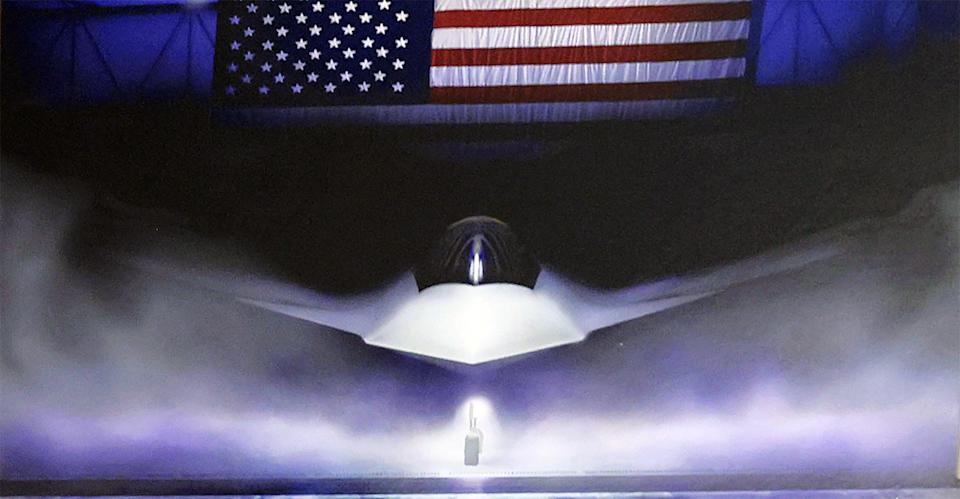
the new F-47 will likely be faster than any fighter jet ever to exist
the new F-47 will likely be faster than any fighter jet ever to exist

(Washington DC) It would stand to reason that the new F-47 will likely be faster than any fighter jet ever to exist, yet there are understandably too many unknowns at the moment, so the unanswered question will likely persist.
However, according to numerous public reports and comments, the F-47 will succeed in flying at least Mach 2, a very significant speed, particularly when blended with stealth. An essay in NewsNation quotes Donald Trump stating that indeed the F-47 will hit speeds of Mach 2.
Trump said, “Its speed is top, so ‘over two,’ which is something that you don’t hear very often,” the article says.
In reality, the technological breakthroughs woven into the F-47 are likely such that the aircraft’s ultimate speed may be much greater than Mach 2. An achievement of Mach 2 for a 5th or 6th-generation stealth fighter is quite significant, as Boeing and the Air Force may have found ways to reach optimal, unparalleled speeds without compromising stealth. This is quite an achievement, as most of the aircraft capable of Mach 2 or faster, such as the US F-15 and Russian Su-27, are not stealthy.
Stealth & Speed
Maintaining stealth at high-speeds becomes more challenging due to the temperatures and heat signatures generated, so it would appear possible that new discoveries are enabling fighter jets to reach Mach 2 or faster speeds without greatly enhancing radar signature.
The F-35 optimizes stealth and multi-role functionality, yet its maximum speed is Mach 1.6. China’s stealthy, 5th-gen J-20 is listed with speeds of Mach 2.0, yet most fighter jets able to reach Mach 2 or faster are not stealthy, as reaching those speeds typically requires massive heat-generating propulsion and sharp, angular less stealthy shapes, structures and edges
Perhaps there are new methods of thermal management or heat-signature reducing technologies?
F-22 Speed
The F-22’s top speed is listed at Mach 2.25, making it among the fastest in the world, yet speed alone is insufficient to ensure air combat supremacy as many variables inform this equation. Thrust-to-weight ratio, high-speed maneuverability and targeting are all determinative factors when it comes to which aircraft may or may not prevail in an air-combat engagement.
The F-22 has among the best thrust-to-weight ratios in the world as well, something which means it can quickly reposition in the air as-needed to gain advantage in a dogfight. The lighter an aircraft is, in relation to the power and propulsion of its engine, the faster and more effectively a fighter-jet can maneuver.
Sensing & Targeting
Then there is the simple question of sensing and targeting, as these factors can just as easily determine the outcome in a dogfight. The F-35, for instance, has long-range, high-fidelity sensors such as the Distributed Aperture System (DAS) which can essentially “see” and target enemy fighters at standoff ranges where it cannot itself be detected. High-resolution, long-range sensors can, in some instances, obviate any need to dogfight, as engagements can be won at stand-off distances.
There is also off-boresight targeting and weapons attack, such as what is possible with the AIM-9X fired from an F-35. This means a weapon can be launched and then change course in flight to attack a target which is beside or behind it. These kinds of attributes, when combined with speed and agility, are factors likely to determine which jet prevails in an air-to-air engagement.
At the same time, sheer speed cannot be underestimated as it enables a jet to simply outrun an enemy or escape without being damaged or destroyed if necessary. There is also the speed of the attack element, as the F-22 is regarded as a “first-shot, first-kill” platform, meaning it can get into position to destroy an enemy and prevail before any response or engagement is possible.
Kris Osborn is President of Warrior Maven – Center for Military Modernization. Osborn previously served at the Pentagon as a highly qualified expert in the Office of the Assistant Secretary of the Army—Acquisition, Logistics & Technology. Osborn has also worked as an anchor and on-air military specialist at national TV networks. He has appeared as a guest military expert on Fox News, MSNBC, The Military Channel, and The History Channel. He also has a Masters Degree in Comparative Literature from Columbia University
